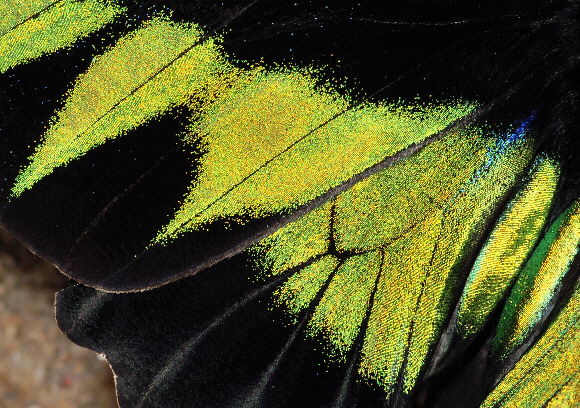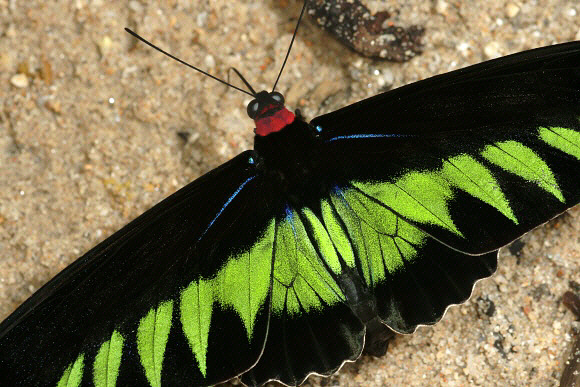
Introduction
The magnificent Rajah Brooke’s Birdwing was discovered on Borneo in 1855 by the legendary explorer and naturalist Alfred Russell Wallace. It is widely distributed throughout Borneo, Sumatra, Palawan and the central states of West Malaysia, and in a few areas is very abundant, but populations are quite localised. It also occurs as a scarce species in Thailand.
Sadly the butterflies are killed in vast numbers, mainly by Orang Asli children, paid a pittance for the dead specimens by dealers who sell them on to gift shops. The majority are badly damaged because the children are unskilled with butterfly nets, and often use crude methods of killing – sometimes the butterflies are attracted to a sticky “bait” which glues their wings to the ground, or sometimes they are killed by throwing small stones at them.
The subspecies trogon, which occurs on peninsular Malaysia in Johore state, and also on Sumatra and Palawan, differs slightly in appearance and behaviour from albescens, and is considered to be a separate species by some taxonomists.
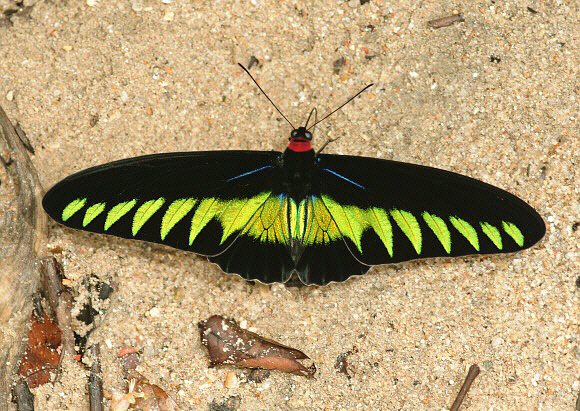
Habitats
In West Malaysia the butterfly occurs in tropical rainforest habitats at altitudes from sea level to about 800 metres. From personal observations I believe the butterflies breed mainly at altitudes above 300 metres, but that the males are more often encountered at much lower elevations, when they descend to imbibe mineralised moisture from seepages or sulphur springs. At Ulu Gerok in Perak for example they occur commonly in oil palm plantations where the larval foodplants are absent, although they are found in greater numbers in the relatively untouched hill forests above. Females are rarely seen, and probably spend most of their lives in the tree tops.
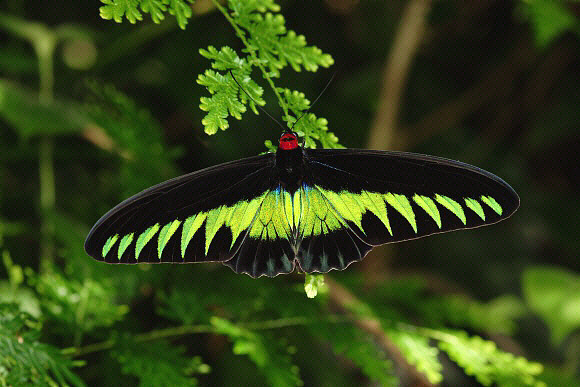
Lifecycle
The globular reddish eggs are laid singly on the leaves of climbing vines of the genus Aristolochia.
The fully grown caterpillar is dark greyish brown, with a light grey saddle mark on the back. The body is adorned with buff and grey tubercles along the back and sides. As with other members of the Papilionidae the larva is equipped with an eversible forked structure ( osmaterium ) behind the head, which secretes a pungent fluid that deters ants, wasps and other predators.
The pupa is apple green, marked with violet, and is attached vertically by the cremaster and a silk girdle, to a vine stem.
Adult behaviour
The butterflies are powerful flyers, capable of travelling from one side of a river to the other with no more than 3 or 4 wing-beats.
Males congregate at hot sulphur springs, seepages and other sources of minerals. They glide slowly in tight circles when about to settle, spiralling gracefully down to the ground. Immediately after alighting the butterflies nervously flutter their wings for a few seconds but soon settle with the wings outspread, always with the forewings swept back, half covering the hindwings. This “mud-puddling” behaviour occurs throughout the day, and often continues until dusk.
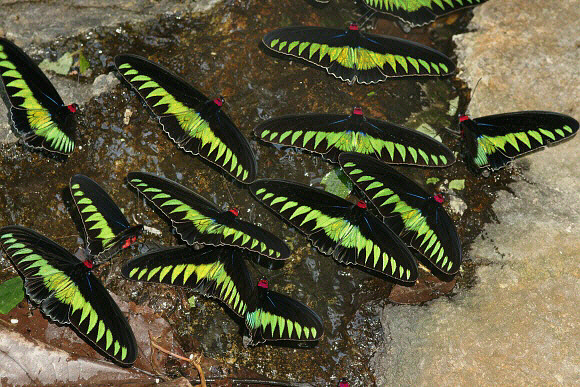
| In May 2009 at Ulu Gerok I came across one of the most stunning butterfly spectacles I have ever seen – a massive group of over 100 pristine Rajah Brooke’s Birdwings settled on a small patch of ground on a quiet forest track. No photograph, video clip or words can begin to do justice to the incredible beauty of these creatures, and to see such a huge aggregation was a sight guaranteed to blow the mind of the most experienced butterfly enthusiast.Try to imagine 100 butterflies, each measuring over 7 inches across, a quivering mass of shimmering iridescent green wings, packed together on a patch of ground the size of a small dining table. Then try to imagine the thrill of being so close that you could reach down and touch them. After taking a few photographs you edge gently away but the whole group erupts into flight, and you are surrounded by a swirling mass of glittering green wings. You freeze on the spot, hoping not to scare them away, and they respond by gliding closely around you. Then one by one they resettle on the ground until they encircle you. At first they nervously quiver and flutter, but after a couple of minutes they all relax and spread their glorious wings. You are mesmerised, and the huge privilege of such an experience is something you never forget. |
In Sabah the butterflies once assembled in vast numbers at Poring hot springs, but most of the area where the butterflies congregated has now been built on. In the Danum valley of Sabah I have often seen them in the company of Graphium sarpedon visiting the flowers of Bauhinia trees. They also visit Mussaenda bushes, and I have observed them nectaring at Lantana in Perak, West Malaysia. On Palawan and Sumatra males apparently do not congregate, and are only rarely seen at sulphur springs, preferring instead to obtain their sustenance exclusively from the flowers of forest trees.
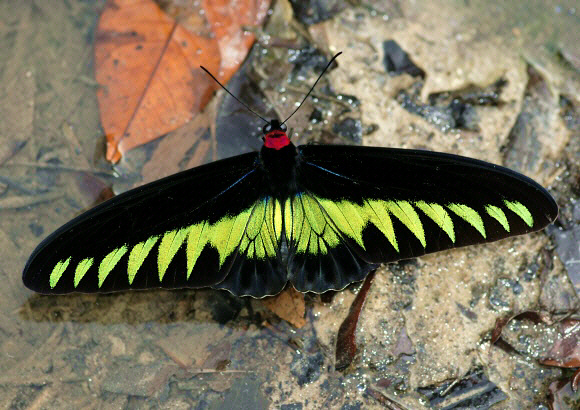
Females are much scarcer than males. My various visits to peninsular Malaysia and Borneo have enabled me to see upwards of 1500 males in total, but only 2 females, one seen in flight across a river at about 200 metres altitude, the other flying high in trees near a waterfall at about 400m. Some authors postulate that males outnumber females by a ratio of as high as 200:1, but it is more likely that the sexes occur in approximately equal numbers, but that the males due to their habits are far more visible.
